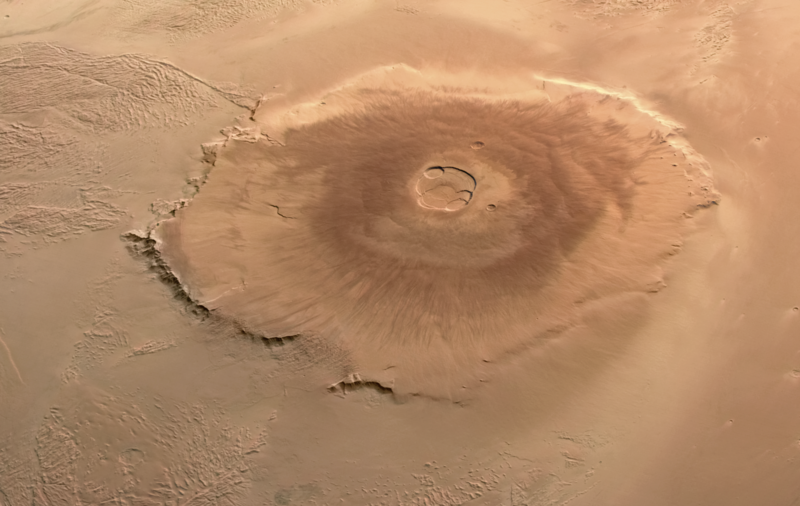
Mars has a fascinating geology that is very comparable to Earth in many ways and also shows its very dynamic history. A well known geological feature on Mars is Olympus Mons, the largest volcano in the solar system, which stands at a height of approximately 16 miles and spans 374 miles in diameter. To compare, the largest volcano on Earth is Mauna Loa which is 6.3 mi high and the volume of Olympus Mons is almost 100 times larger than that of Mauna Loa. Because Mars lacks plate tectonics, its crust remains stationary and the lava continues to pile up in one place into one very large volcano.
Another very cool feature of Mars’ geology is Valles Marineris, a massive canyon system. This system runs along the Martian equator and is 2500 mi long and reaches depths of up to 4 mi. This dwarfs the Grand Canyon in Arizona which is only 500 miles long and about 1 mile deep. To put this in perspective, Valles Marineris is as long as the United States and spans about ⅕ the entire distance around Mars. Valles Marineris formed from the cracking of the Martin crust as the Tharsis region uplifted and the planet cooled. It was widened by erosional forces, and potentially formed by water channels that have been found on the eastern flanks of the rift.
Mars’ surface also shows signs of ancient rivers and lakes which is evidenced by dried-up river valleys, and lake beds. This means that Mars once had a climate that could support liquid water and potentially life. As you can see, Mars’ geology is super fascinating and really helps to unravel the history of the planet. One thing’s for sure, future astronauts will have some pretty spectacular places to check out on Mars!